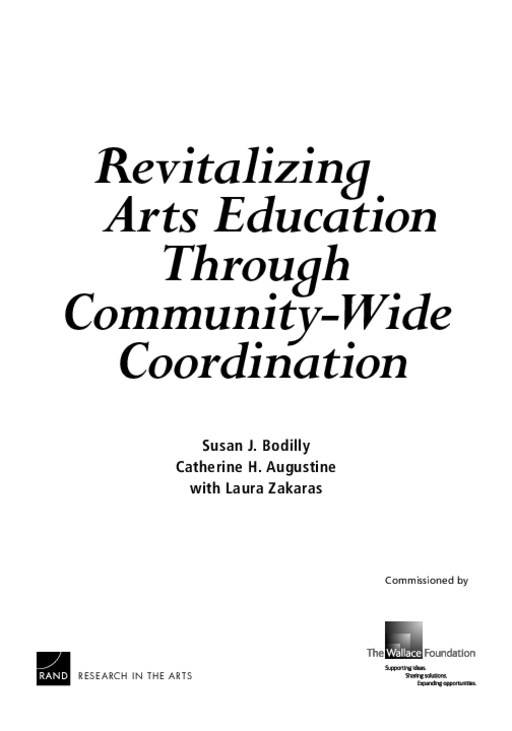Back to Overview
Revitalizing Arts Education Through Community-Wide Coordination
Table of Contents
Implementation Tips
Researchers identified eight strategies commonly found in the six sites it studied for improving access to and the quality of arts learning:
- Conduct audits of arts education to gather information on how many students are served by arts learning programs by school, neighborhood or region. In all six cases, the audits revealed inequities and helped rally support for initiatives.
- Set a goal of equitable access to arts learning to help counteract the emphasis on test scores, lack of time for arts learning during the school day, and uneven participation in out-of-school time arts programs.
- Use a strategic planning process to set citywide plans and strategies for expanding access.
- Build a compelling argument for devoting scarce public or private resources to arts education.
- Attract and leverage resources to develop creative approaches, such as fund pooling, so that organizations can set realistic plans and have confidence in them.
- Hire an “arts education coordinator” highly placed within the school district administration to advocate for the arts and secure their place in the core curriculum. That’s in contrast to the more usual approach of hiring a teacher to serve as a part-time arts coordinator.
- Build individual and organizational capacity to ensure that arts teachers, classroom teachers and teaching artists understand the value of arts education and are trained to teach it.
- Support ongoing advocacy to generate needed policy and funding changes and to spur students, parents, teachers, principals, and others to request arts learning of their community leaders.
Topics:

